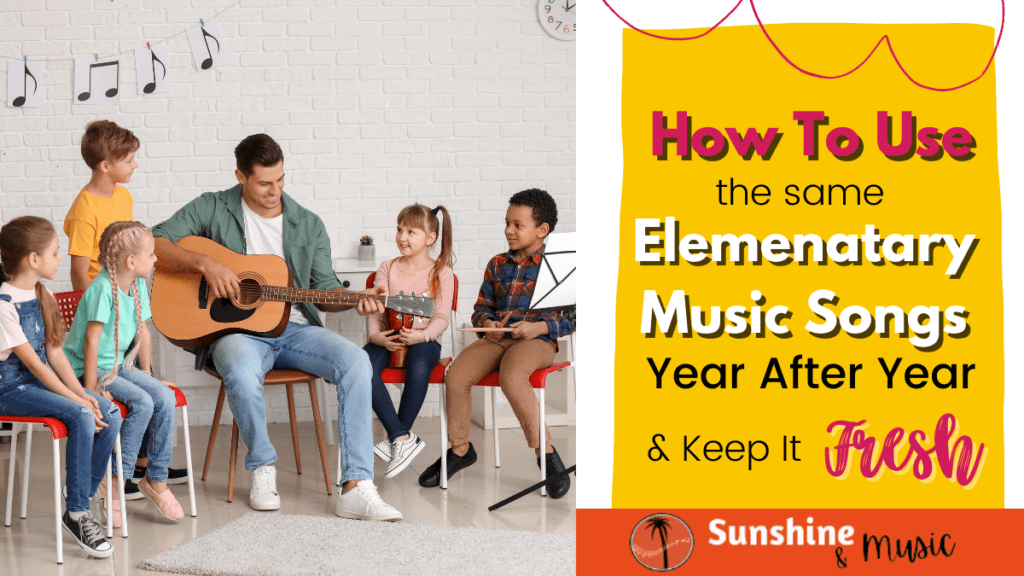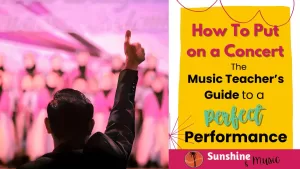Are you drawing a blank on elementary music songs to use in your lessons? Have a favorite elementary music song that you want to use, but you already used it last year?
Is it kosher to use a song in more than one grade level? Will students get bored of it or call you out for repeating it? These are questions I have asked myself as I planned lessons in the past. Here is what I have found out over the years …
Can I repeat the same music in elementary school from one grade to the next?
Yes! Not only is it ok. It’s something I often strive for. If I find a really good quality folk song or piece of music, I started brainstorming ways it could be used at different levels.
First, students get to learn the song much more richly as it reappears in new grade levels. Second, students can focus on new things now that they know that melody, such as chord root, improvising, creating body percussion, playing accompaniments on orff instruments and so much more.
How can I use a song across different grade levels in elementary music?
Use songs in elementary music to highlight new skills over each grade level. A familiar song creates an excellent foundation for students to build on.
Here is an example of a song (Frere Jacques) being used across multiple grade levels:
- First grade: students learn the song
- Second grade: students sing chord roots with the song
- Third grade: students sing the song as a round
- Fourth grade: students play orff instrument accompaniments to the song
- Fifth grade: students can accompany their own singing on the ukulele
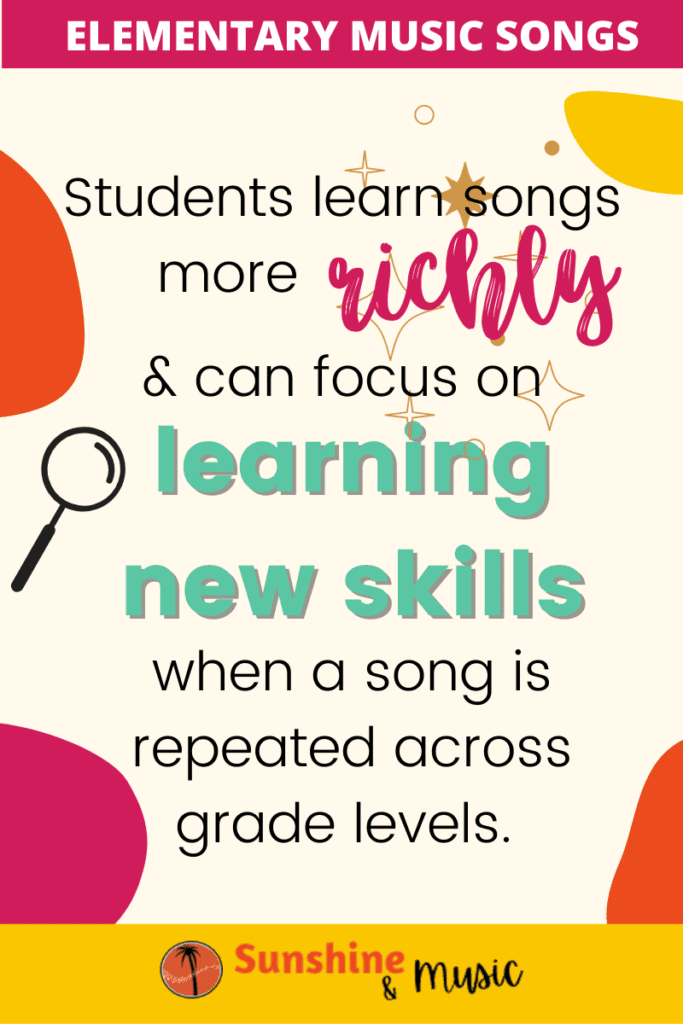
More Ideas for Repeating Elementary Music Songs
The sequence and skills used in my Frere Jacques example are just one of many pathways you could take as you sequence through a song. Here is a short list of other elementary music skills that you could build on over the years with a repeated song:
- Sing the resting tone
- Move to the steady beat
- Sing or play a repeated pattern in the song
- Name the meter or tonality of the song
- Echo tonal or rhythmic patterns
- Sing or play an ostinato
- Improvise in between sections of the song
- Read rhythms or tonal patterns from the song
- Create dance moves
- Play the song on the recorder, xylophone, ukulele or other instrument
I’m sure that I left off a huge range of other music things you could do. The possibilities are really endless. But I hope you get the idea.
Songs for elementary music class
Want some of my personal favorite songs for elementary music class? I will list a few that I think are great to reuse, and know that there are many, many more. Honestly, any song that you really like and that you think you can use to teach a wide variety of skills is fair game for repeating multiple grade levels.
Here are my top five:
Carnival of the Animals

I love Carnival of the Animals. I use it in kindergarten as mostly a fun movement activity for the end of the year. We move slow and fast and explore how music makes us feel.
Then in 1st or 2nd grade we can listen again and begin to describe what we have heard. I have listening maps that students can use to focus on specific elements within each song, and I have listening glyphs that I love to use for describing what we hear in the music.
(You can learn all about the power of listening maps in my blog post – Listening Maps for Music: The Ultimate How To Guide.)
If I wanted to expand to older grades, I could have students listen to a movement and do a close read activity, discussing composer intent and use of musical elements.
William Tell Overture
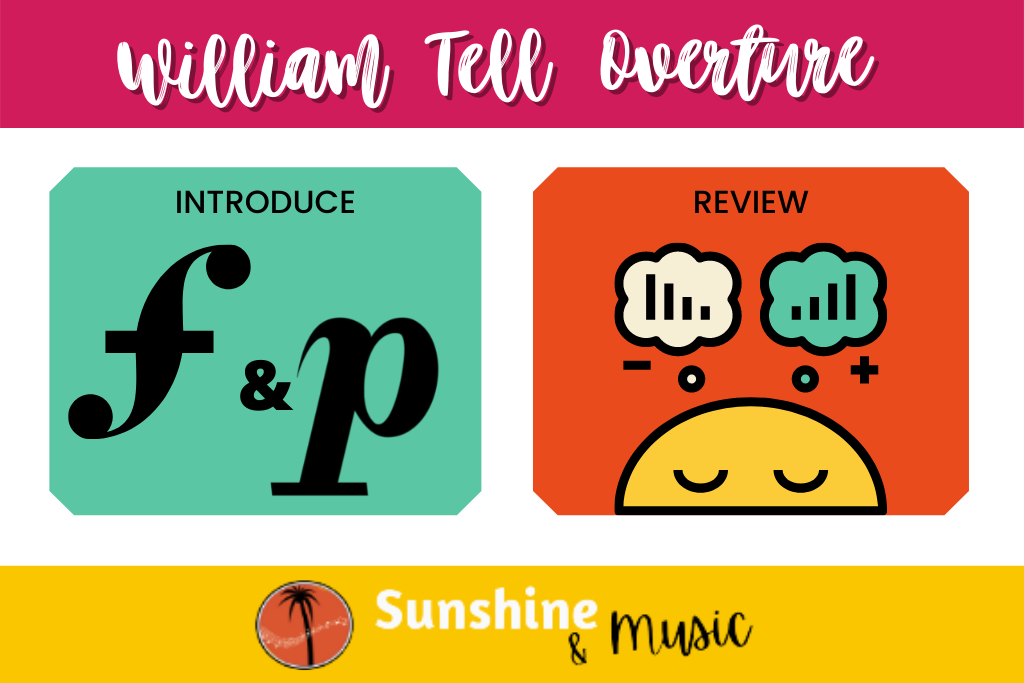
This is one of my personal favorite elementary music songs, because it is so effective for teaching about forte and piano. I have a whole blog post (complete with video!) about my forte and piano activity to this classical piece.
I use this song in 1st and 2nd grade as we learn about forte and piano, and I use it again to review forte and piano in older grades.
This just goes to show that you don’t ALWAYS have to change the way you present a song when you bring it back in an older grade level. Sometimes it can be an effective way to review what you have already learned and activate prior knowledge.
Simple Gifts
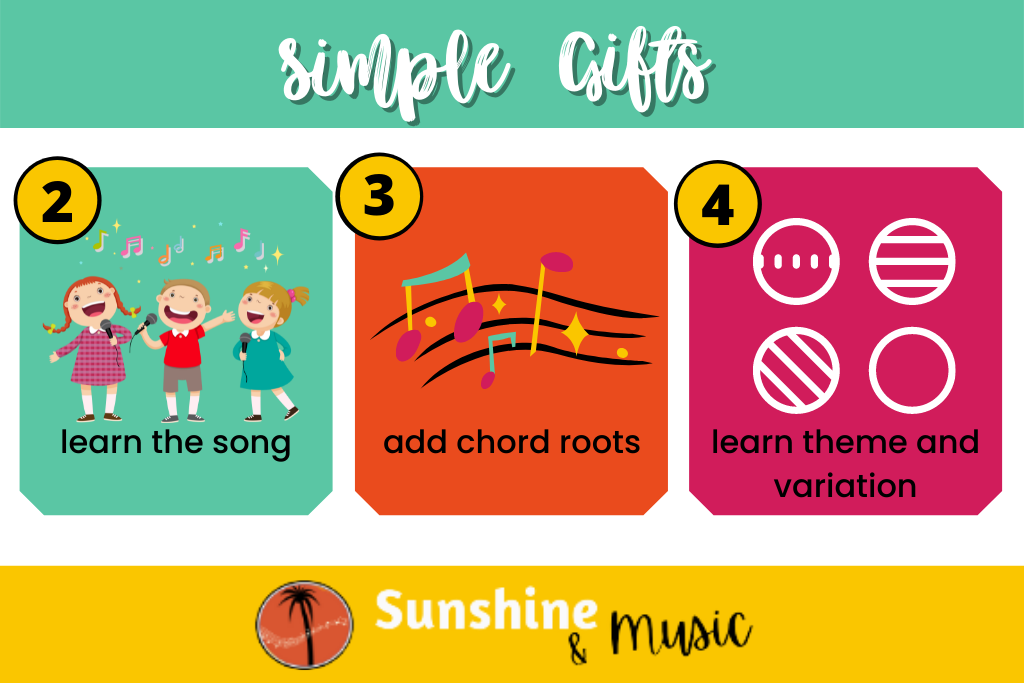
This is such a classic song. There is so much you can do with it.
My second graders learn the song. Then in third grade they learn chord roots. In fourth grade they learn about theme and variation and listen to Aaron Copland’s Variations on Simple Gifts from Appalachian Springs. We can also take this moment to compare a folk song with an orchestral work and compare and contrast.
Frere Jacques
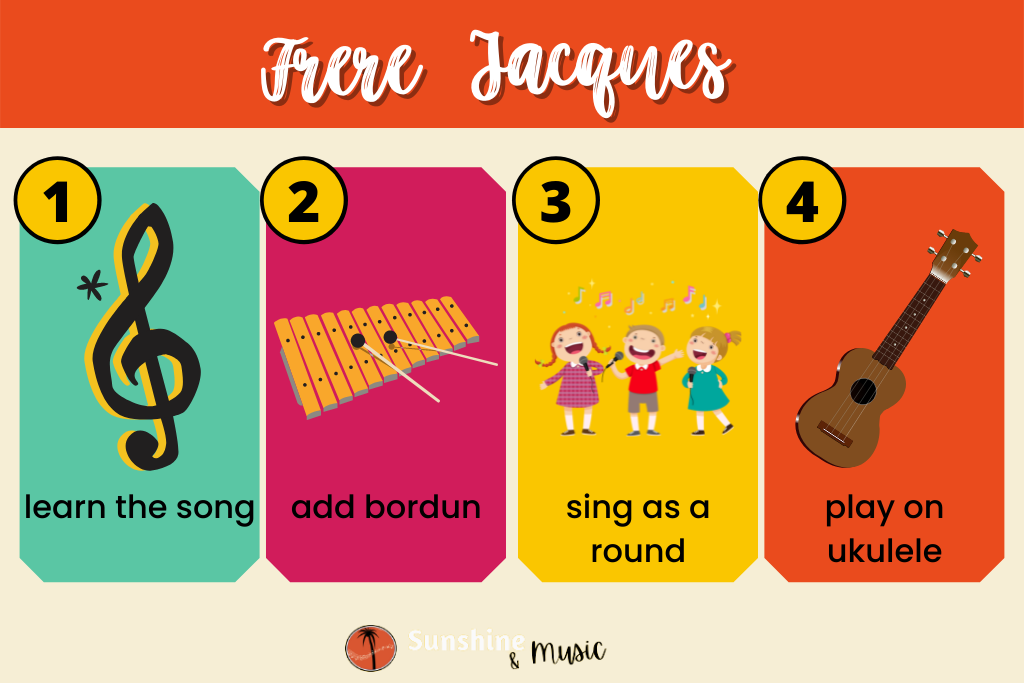
My sequence for this is very similar to the one I used as an example earlier.
In first grade, students learn the song. In second grade, they add a steady bordun accompaniment as we are reviewing mallet technique.
Then in third grade we sing the song as a round, and in fourth or fifth grade (whenever we get to it with ukuleles), we sing and strum accompaniment on ukulele.
Hot Cross Buns
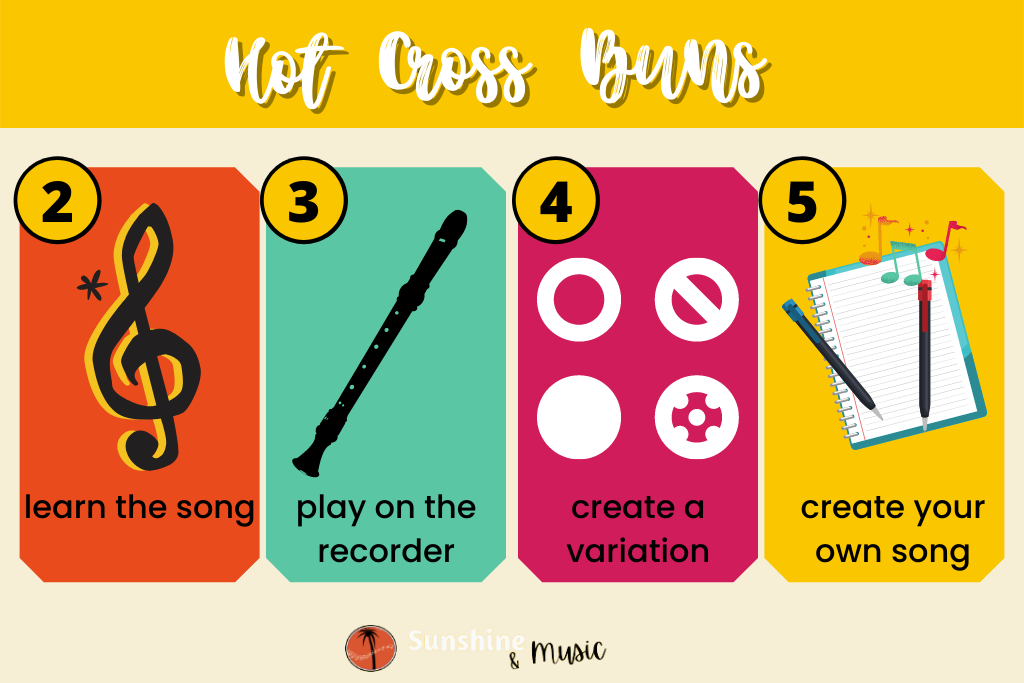
This recorder classic can be so much more. Here is how I have built on it over the years.
Second graders learn the song and a simple accompaniment on xylophones. Third graders learn to play the song on the recorder and compose a new ending to the song. Fourth grade students create a variation on Hot Cross Buns in our composing unit that comes right after the Theme and Variation unit.
In fifth grade we do a version of Recorder Karate, where Hot Cross Buns is the White Belt, and then they do their composing project, where they use motives from Hot Cross Buns (and other songs from the recorder unit), and remix them into a new songs that they create themselves.
The Benefit of Repeating Songs in Elementary Music Class
Students are able to build a sense of mastery over the years with these familiar songs. But they don’t get bored because they are continuously challenged with new skills.
And they can master the new skills FASTER because they are not bogged down trying to learn a new song AND a new skill. It is a win-win!
Did you enjoy this post? Join my mailing list and get updates monthly on new blog posts and resources (plus get a free listening map just for signing up!).
Blog Posts You Might Enjoy
17 Best Elementary Music YouTube Channels and Videos – The Ultimate List!

